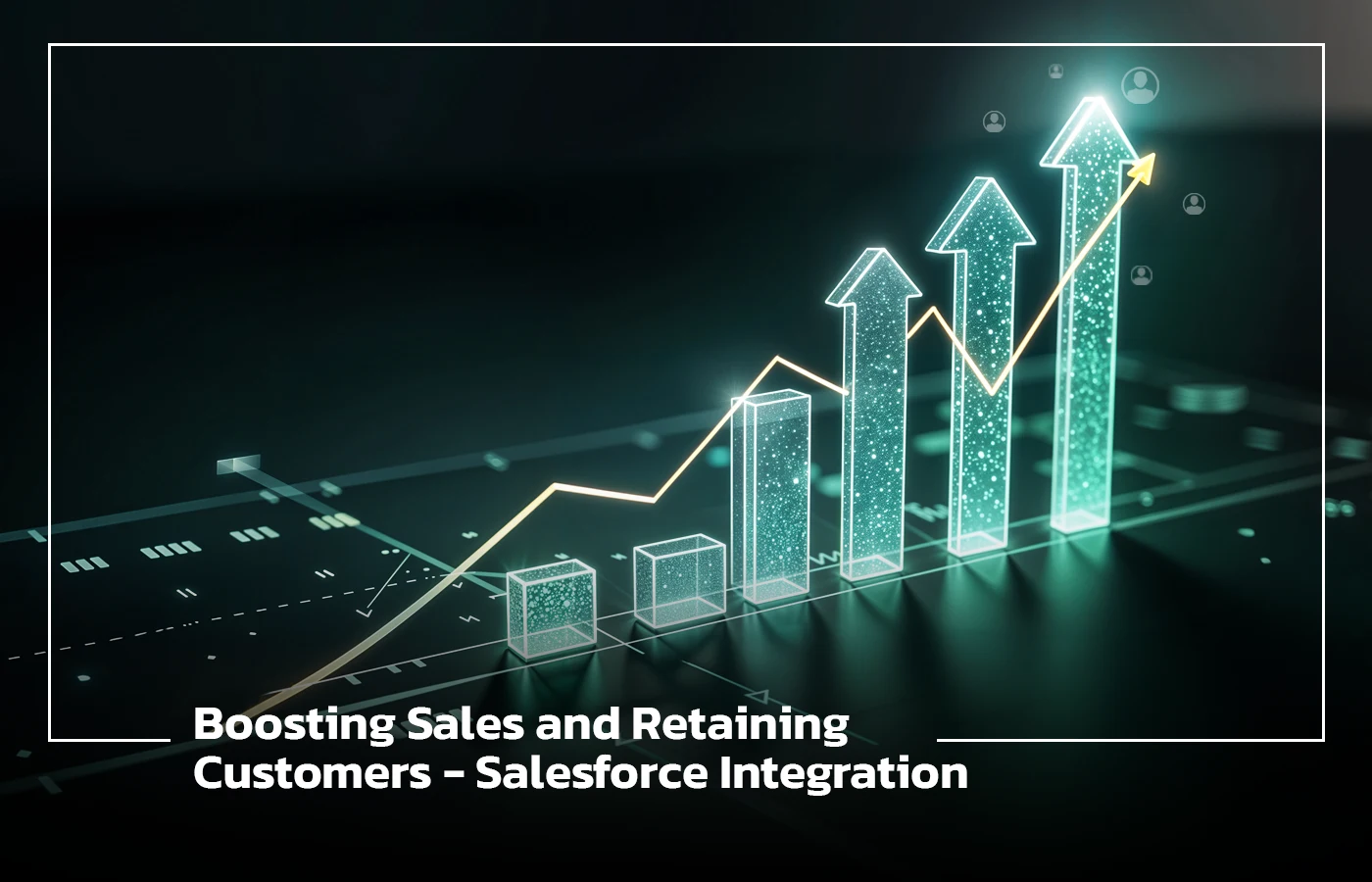Boosting Sales and Retaining Customers – Salesforce Integration

Introduction
Doing business has become complicated. The average organization uses hundreds of applications — but only 28% are integrated.
For a business to compete in a complex and competitive world, it needs to be highly connected to its customers, which is possible through adopting technology. Data received by sales, customer service, marketing, and social media, and through various applications, can be overwhelming to consolidate manually. Despite having large volumes of data, getting up-to-date, reliable, and actionable insights is challenging unless all the data is received through a single channel. This is why a CRM solution is essential for your business.
Cloud CRM – Salesforce
Salesforce is a customer relationship management application that manages all the current and potential customer’s data. It helps a business to stay connected to its customers, thereby improving the customer relationships, in turn, helps to grow your business and profitability.
Unlocking the Power of Salesforce Integration
Salesforce Integration can enable businesses to connect their CRM with other applications and drive efficiency and communication. Whether it’s streamlining workflows, centralizing data, or enabling real-time analytics, integrating Salesforce with external systems allows businesses to unlock its full potential.
In this blog, we will explain how Salesforce Integration in Australia connects Salesforce with third-party applications, such as Gmail, to enhance data accessibility and improve productivity.
What is Salesforce Integration?
Salesforce Integration is the process of connecting the CRM platform to other systems and data sources the business uses. By integrating Salesforce, the company can improve efficiency and manage accurate data on a single platform.
Tools and APIs for Salesforce Integration
To facilitate integrations, Salesforce provides robust tools and APIs that cater to diverse business needs. Here are some key options:
1. Salesforce APIs
Salesforce offers various APIs to connect external systems:
- REST API: Ideal for interacting with Salesforce data from external applications. It’s lightweight and perfect for mobile and web apps.
- SOAP API: Designed for enterprise-level integrations requiring complex operations.
- Bulk API: Optimized for handling large volumes of data, such as batch processing.
- Streaming API: Enables real-time data updates and notifications for efficient monitoring.
- GraphQL API: Offers a flexible query language for fetching Salesforce data.
2. Salesforce Integration Tools
- MuleSoft Anypoint Platform: An integration platform that enables seamless connections between Salesforce and other applications.
- Heroku Connect: Syncs Salesforce with Postgres databases for real-time updates.
- Zapier: An automation tool for connecting Salesforce with thousands of apps.
- Salesforce Connect: Allows real-time access to external data without data duplication.
Salesforce Integration Example: Gmail Suite
One of the most valuable Salesforce integrations is with the Gmail Suite, an essential communication and productivity application. It streamlines communication and ensures that sales and customer service teams have complete visibility of client interactions without shuffling between the two applications.
How It Works
Salesforce Gmail Add-On – users can view Salesforce data directly within their Gmail interface.
Email Syncing – Emails sent or received via Gmail automatically sync with Salesforce records.
Calendar Integration – Google Calendar events link to Salesforce opportunities, accounts, or leads.
Data Entry – Sales reps can create new leads, tasks, or records in Salesforce directly from Gmail.
Benefits of Salesforce and Gmail Suite Integration
- Centralized Information: Eliminates the need to switch between platforms by providing all relevant data in one place.
- Improved Productivity: Saves time with automated syncing and streamlined workflows.
- Enhanced Customer Experience: Provides sales teams with detailed insights into client interactions, enabling more personalized communication.
- Data Accuracy: Reduces errors by minimizing manual data entry.
Why Salesforce Integration Matters
Key Benefits
Automation: Minimize repetitive manual tasks.
Efficiency: Eliminates switching between platforms, reducing manual data entry.
Scalability: Enables adding new tools and systems as your business grows.
Real-Time Insights: Access to the comprehensive data for better decision-making.
Enhanced Communication: Enables personalized and timely responses.
Customer Satisfaction: Deliver seamless, personalized experiences across all touchpoints.
Conclusion:
Salesforce Integration connects Salesforce with third-party applications, enhancing productivity, data accessibility, and customer satisfaction.
Salesforce Integration is essential for businesses seeking to reduce repetitive tasks and improve business growth.
Integrating Salesforce with the Gmail Suite syncs emails, calendars, and customer data for centralized access. It boosts efficiency, reduces manual work, and delivers personalized customer interactions.
Contact us today to integrate Salesforce with your existing business applications to unlock the full potential of Salesforce.
